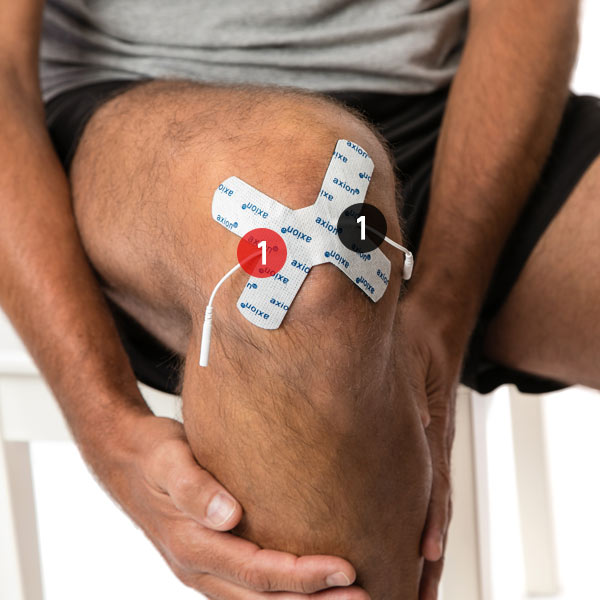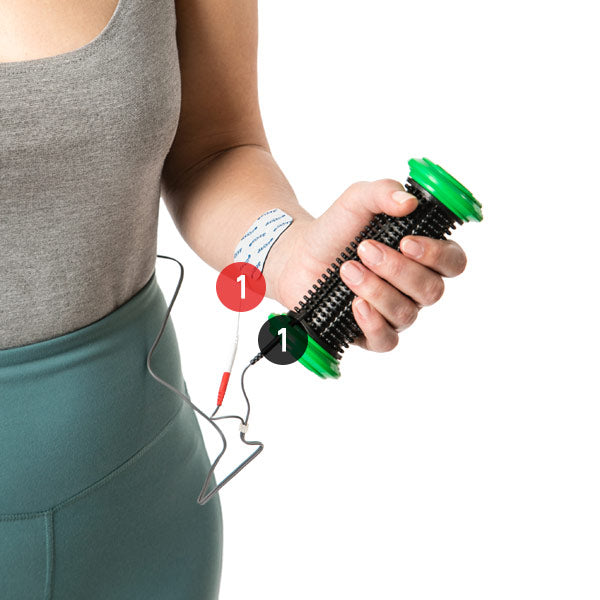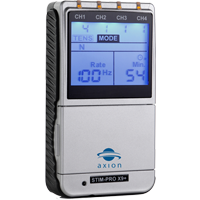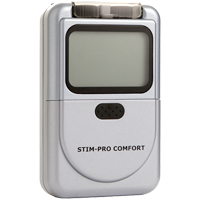TENS application for arthrosis

TENS therapy to relieve pain (from arthrosis, rheumatism and arthritis) is the subject of extensive research and numerous studies. Many physiotherapists, pain centers and clinics use TENS in this context. The results show that TENS therapy can increase both the well-being and mobility of the affected joint. And with success, as the experiences of numerous arthrosis patients prove[1]. In the meantime, stimulation current devices are not only reserved for medical practices, but a compact TENS device for pain therapy at home can also be purchased.
A stimulation current device transmits electrical impulses to the skin via electrodes, which has two effects on pain relief. The transmission of pain to the brain is blocked, which means that the pain may no longer be perceived. On the other hand, the TENS application can stimulate our body to release its own painkilling substances, the so-called endorphins[2]. In addition, the TENS treatment also promotes blood circulation[3].


-

This guide is for orientation purposes and does not replace the supervision of a doctor or therapist. Please follow the warnings and safety instructions of your device. Changes and errors are possible.
-

Number inside the circle: Channel number
Circle color: Red = Electrode 1, Black = Electrode 2
The recommended programs for axion TENS devices
-

-

STIM-PRO T400
P08 and/or P12
-

Please note when using TENS:
The intensity should be adjusted so that it is felt as a pleasant tingling sensation. The duration of the application should be approx. 40 minutes in order to be able to achieve a lasting reduction in pain. It also makes sense to switch programs every now and then.
What causes osteoarthritis?
The advantages of pain treatment with TENS
-

From everywhere
You can use TENS therapy anywhere. It doesn't matter whether you're sitting comfortably on the sofa or in the office.
-

Drug free
TENS pain therapy is an alternative to drug pain treatment
-

At any time
You can use TENS flexibly and at any time. Success can already be achieved after the first treatment
-

Free of side effects
When used correctly, pain treatment with TENS has practically no side effects
Studies and scientific sources






